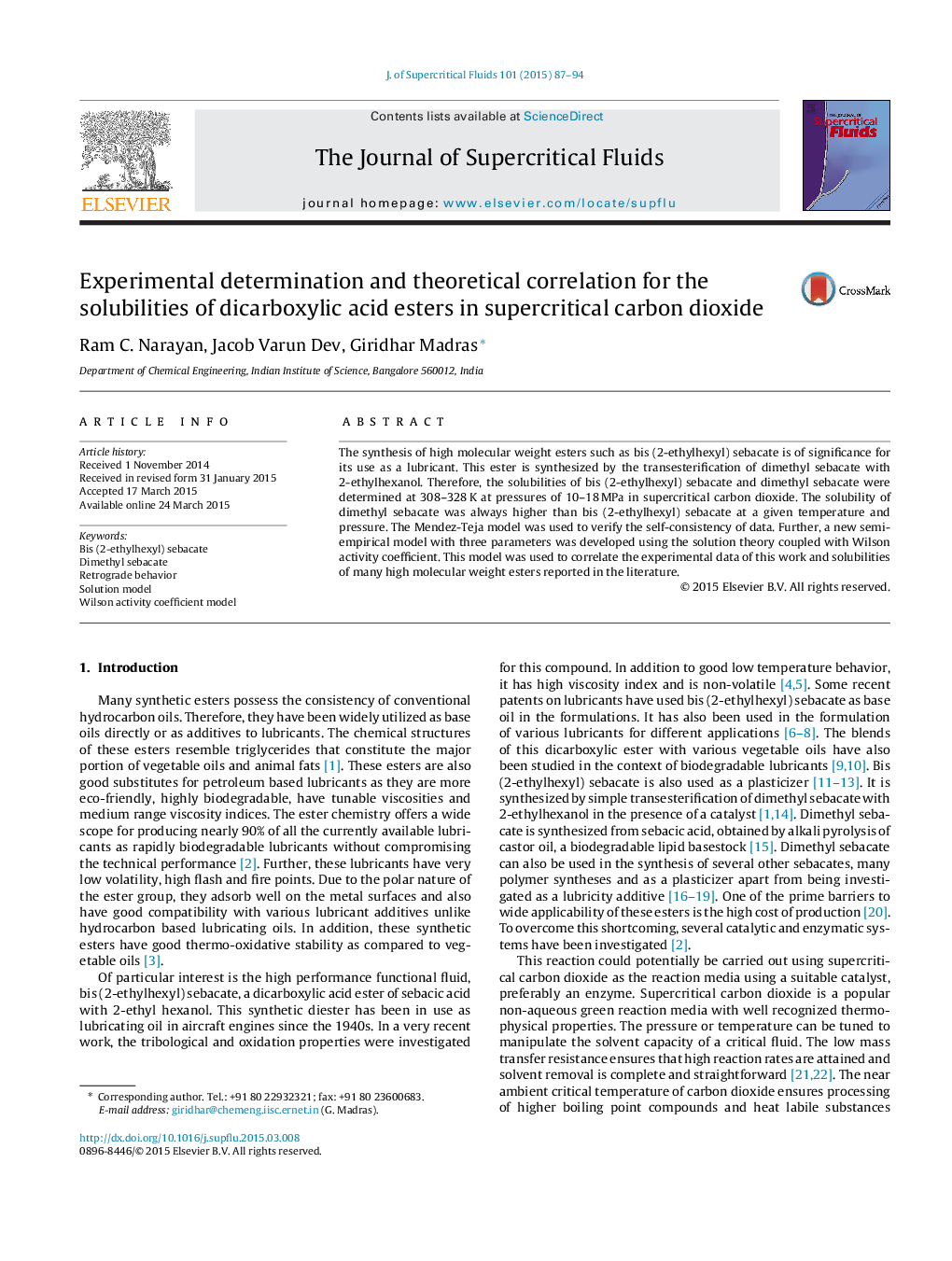| Article ID | Journal | Published Year | Pages | File Type |
|---|---|---|---|---|
| 230238 | The Journal of Supercritical Fluids | 2015 | 8 Pages |
•First report on solubilities of dicarboxylic esters in supercritical fluids.•New theoretical framework specifically developed for solubility of liquid solutes.•Correlation based on solution theory with Wilson activity was developed.•Model shows lower average deviation compared to the Chrastil and MT-model.
The synthesis of high molecular weight esters such as bis (2-ethylhexyl) sebacate is of significance for its use as a lubricant. This ester is synthesized by the transesterification of dimethyl sebacate with 2-ethylhexanol. Therefore, the solubilities of bis (2-ethylhexyl) sebacate and dimethyl sebacate were determined at 308–328 K at pressures of 10–18 MPa in supercritical carbon dioxide. The solubility of dimethyl sebacate was always higher than bis (2-ethylhexyl) sebacate at a given temperature and pressure. The Mendez-Teja model was used to verify the self-consistency of data. Further, a new semi-empirical model with three parameters was developed using the solution theory coupled with Wilson activity coefficient. This model was used to correlate the experimental data of this work and solubilities of many high molecular weight esters reported in the literature.
Graphical abstractFigure optionsDownload full-size imageDownload as PowerPoint slide
